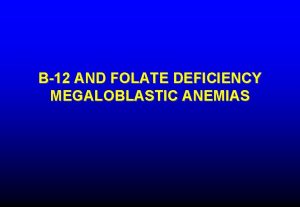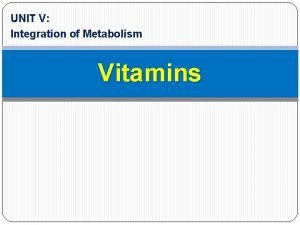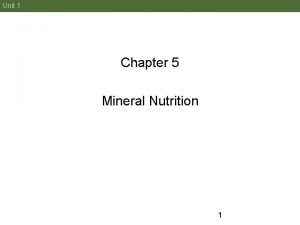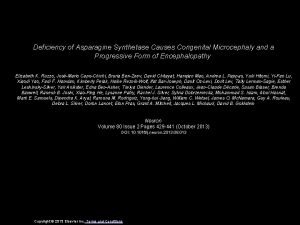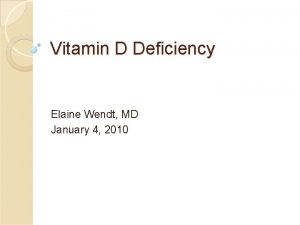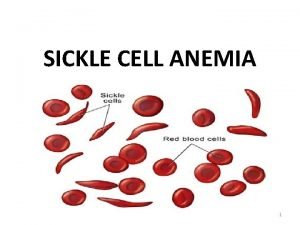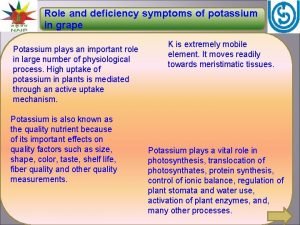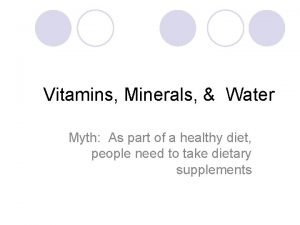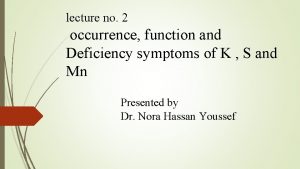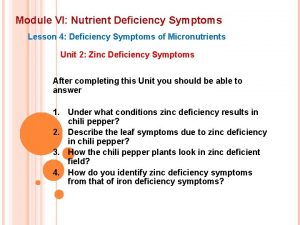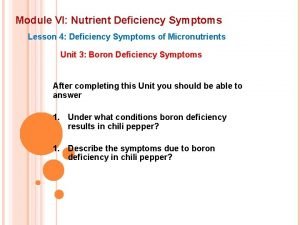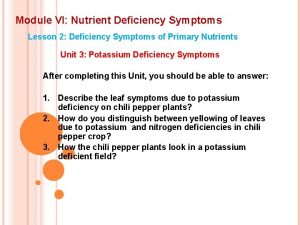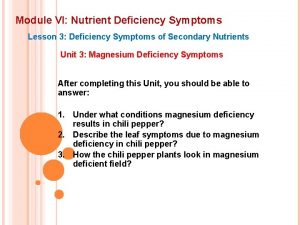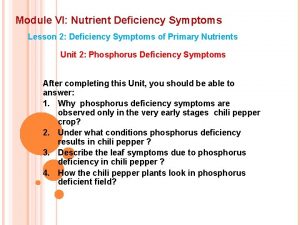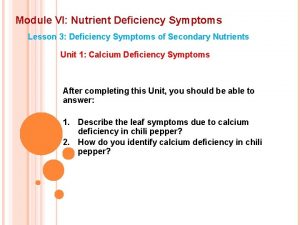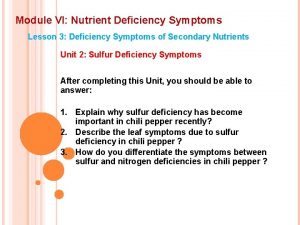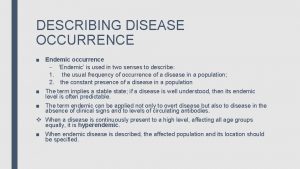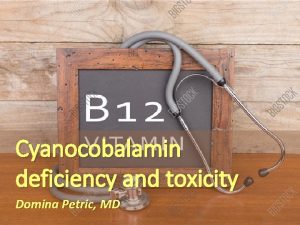lecture no 3 occurrence function and Deficiency symptoms
















- Slides: 16

lecture no. 3 occurrence, function and Deficiency symptoms of Fe , Cu and Zn PRESENTED BY DR. NORA HASSAN YOUSSEF

Iron • iron are present in minerals in hydrated oxides such as limonite (Fe 2 O 3. 3 H 2 O), and in the sulfide form. • Iron is most available to the plant in the ferrous form, but significant quantities of the ferric ion may also be absorbed.

• The availability of iron to the plant is controlled rather sharply by the soil p. H. In acid soils, appreciable amounts of iron are dissolved in the soil solution and available to the plant. However, in neutral or alkaline soils, iron is much more insoluble.

Function Iron has a number of important functions in the overall metabolism of the plant. It appears to be essential for the synthesis of chlorophyll It has a major role in the biosynthesis of cytochromes. It acts as an activator of some enzymes.

Deficiency symptoms of iron 1. Extensive chlorosis of leaves specially the younger one. 2 -The lack of iron may inhibit formation of chloroplasts through inhibition in protein synthesis.

Copper • The major portion of the copper of primary rock is present as chalcopyrite (Cu. Fe. S 2), which is the probable source of natural deposits of copper sulfide in the soil

• The divalent copper cation is adsorbed very strongly to the soil colloids and organic materials of the soil a form of which it is relatively exchangeable.

Function Copper acts as a component of some enzymes. It has a role in photosynthesis process as a constituent of chloroplast.

Deficiency symptoms of Copper. 1 -It causes a necrosis of the tip of young leaves that proceeds along the margin of the leaf, giving it a withered appearance. 2 - Under sever condition the leaves may be lost, and the whole plant may appear wilted.

3 - Reclamation disease: It is also called as White Tip disease and is found in legumes, cereals, oats and beet. The tips of the leaves become chlorotic followed by a failure of the plants to set seed.

Zinc zinc occurs in the ferromagnesium minerals, magnetite and biotite. Weathering of these minerals releases zinc in the divalent form, which is readily adsorbed onto soil and organic matter in exchangeable form.

• As with many other essential elements, one of the factors controlling the availability of zinc is the soil p. H. The availability of zinc decrease with increase in p. H, making it very likely that symptoms of zinc deficiency may occur in plants growing in alkaline soils.

Function It participates in the metabolism of plants as an activator of several enzymes. It involved in the biosynthesis of the plant auxin (IAA). It plays an important role in protein synthesis.

Deficiency symptoms of zinc 1 -An interveinal chlorsis of the older leaves starting in the tips and margins. 2 - White necrotic spots. 3 - Seed production and fruits size is greatly reduced. 4 - Leaves are often narrower or have wavy margins. 5 - Smaller leaves and shortened internodes resulting in stunted growth.

6 - The common disease is little leaf disease. Yellow mottling of leaves, reduction of leaf size with rosette appearance (due to reduced internodal distance) and die back of the affected branches are symptoms of the disease.

 Megaloblastic anemia causes
Megaloblastic anemia causes Megaloblastic anemia causes
Megaloblastic anemia causes Vitamin c deficiency symptoms
Vitamin c deficiency symptoms Chlorine deficiency in plants symptoms
Chlorine deficiency in plants symptoms Asparagine synthetase deficiency symptoms
Asparagine synthetase deficiency symptoms Calcium deficiency symptoms in plants
Calcium deficiency symptoms in plants Low vitamin d
Low vitamin d Iron deficiency symptoms
Iron deficiency symptoms Plant name
Plant name Symptoms of low iron
Symptoms of low iron Difference between period pain and pregnancy pain
Difference between period pain and pregnancy pain Vitamin b function and deficiency
Vitamin b function and deficiency 01:640:244 lecture notes - lecture 15: plat, idah, farad
01:640:244 lecture notes - lecture 15: plat, idah, farad Minerals sources functions and deficiency chart
Minerals sources functions and deficiency chart Examples of macronutrients elements
Examples of macronutrients elements Co occurrence matrix example
Co occurrence matrix example Animal texture
Animal texture
